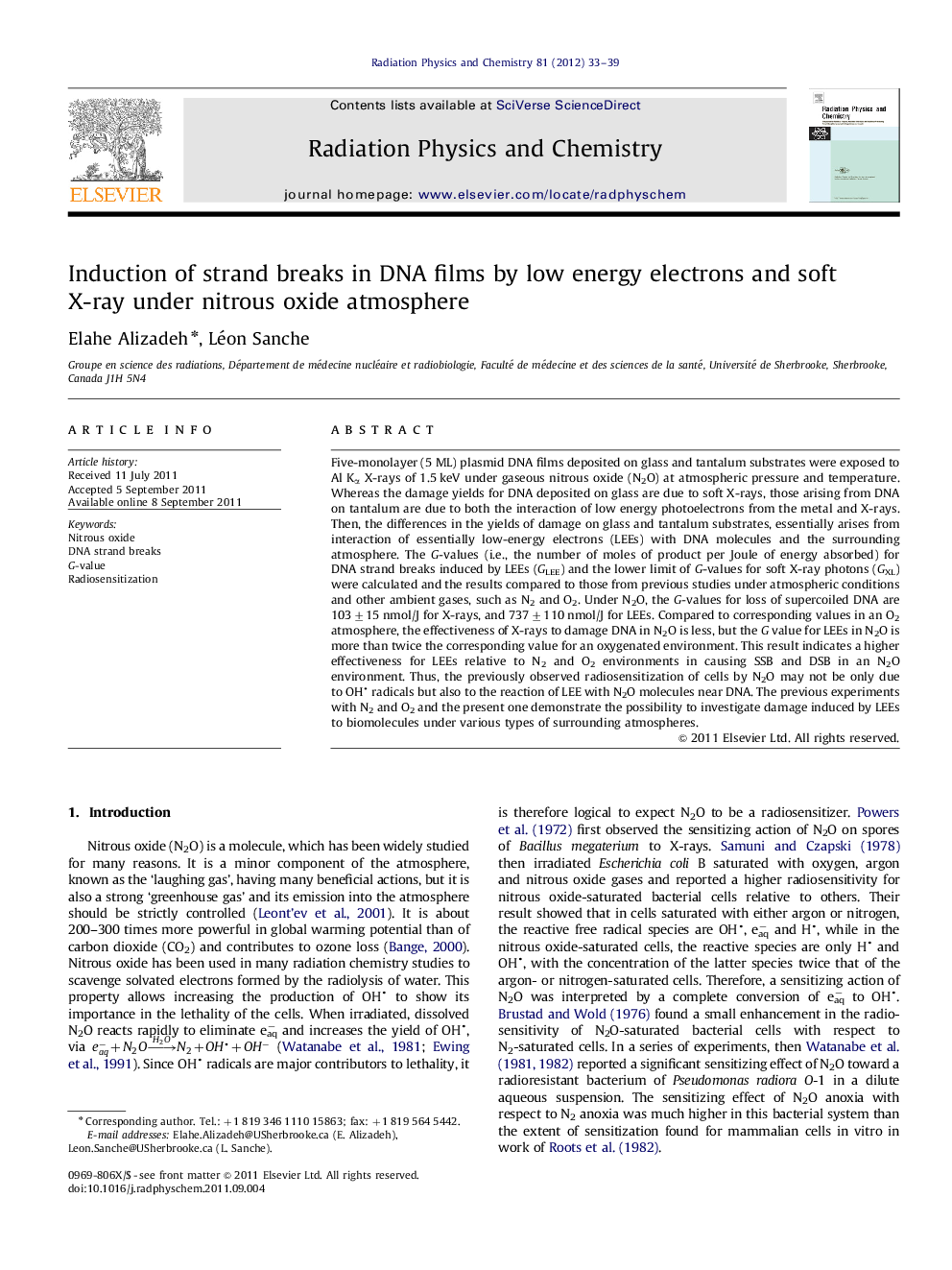| کد مقاله | کد نشریه | سال انتشار | مقاله انگلیسی | نسخه تمام متن |
|---|---|---|---|---|
| 1886547 | 1043532 | 2012 | 7 صفحه PDF | دانلود رایگان |

Five-monolayer (5 ML) plasmid DNA films deposited on glass and tantalum substrates were exposed to Al Kα X-rays of 1.5 keV under gaseous nitrous oxide (N2O) at atmospheric pressure and temperature. Whereas the damage yields for DNA deposited on glass are due to soft X-rays, those arising from DNA on tantalum are due to both the interaction of low energy photoelectrons from the metal and X-rays. Then, the differences in the yields of damage on glass and tantalum substrates, essentially arises from interaction of essentially low-energy electrons (LEEs) with DNA molecules and the surrounding atmosphere. The G-values (i.e., the number of moles of product per Joule of energy absorbed) for DNA strand breaks induced by LEEs (GLEE) and the lower limit of G-values for soft X-ray photons (GXL) were calculated and the results compared to those from previous studies under atmospheric conditions and other ambient gases, such as N2 and O2. Under N2O, the G-values for loss of supercoiled DNA are 103±15 nmol/J for X-rays, and 737±110 nmol/J for LEEs. Compared to corresponding values in an O2 atmosphere, the effectiveness of X-rays to damage DNA in N2O is less, but the G value for LEEs in N2O is more than twice the corresponding value for an oxygenated environment. This result indicates a higher effectiveness for LEEs relative to N2 and O2 environments in causing SSB and DSB in an N2O environment. Thus, the previously observed radiosensitization of cells by N2O may not be only due to OH radicals but also to the reaction of LEE with N2O molecules near DNA. The previous experiments with N2 and O2 and the present one demonstrate the possibility to investigate damage induced by LEEs to biomolecules under various types of surrounding atmospheres.
► A completely different and new approach is applied to investigate the radiation chemistry of N2O molecules and DNA.
► The technique allows one to distinguish between DNA damage caused by soft X-rays and secondary electrons of low energy.
► N2O strongly sensitizes DNA to the damage induced by low energy electrons (LEEs).
► LEEs are much more effective than X-rays in causing SSB and DSB to DNA in N2O environment.
Journal: Radiation Physics and Chemistry - Volume 81, Issue 1, January 2012, Pages 33–39